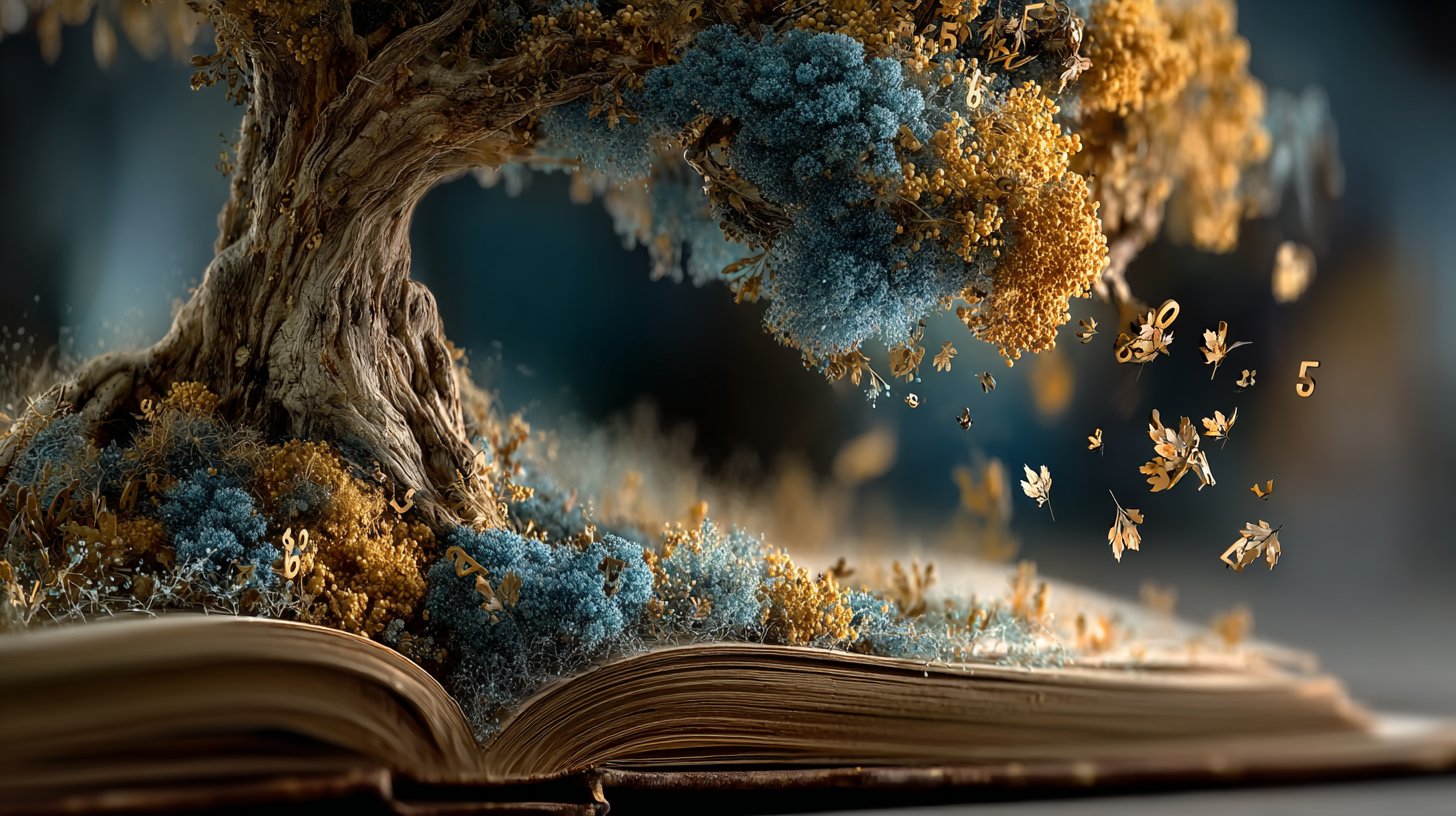Numbers are not only significant for mathematicians: they play a central role in literature and shape its themes and structures. In this article, we will examine how numerological symbolism can reveal the deeper meanings in literary works and how authors use numbers to convey emotions and thoughts.
Numerical symbolism encounters us in many literary materials - whether in fairy tales, novels, or poems. Authors often use numbers as symbols. For instance, the number three can stand for completeness and harmony. This is evident in many fairy tales, where the repetition of events three times or the mention of three main characters frequently occurs. The number seven is traditionally regarded as a magical number, seen as a lucky number in many cultures. It is found not only in literature but also in religions and fables. The use of numbers in literary works not only provides an interesting reading experience but also stimulates reflection.
Numbers in Character Representation

The use of numbers is not limited to structures but also influences character portrayal. Authors can clarify the traits or characteristics of their figures using numbers. An example of this could be a character from a novel described as '51 years old.' The number not only indicates age but also allows inferences about life experiences and the associated wisdom. A protagonist who is 40 years old may face entirely different challenges than a 25-year-old. Such numerical details shape your image of the character and can make their decisions and actions more understandable.
Numbers in the Structure of Stories

Numbers also influence the structure and progression of stories. Often, narratives are organized according to a specific number - whether it is the use of chapters arranged in groups of three, or narrative threads that refer to the number seven. In stories that consist of seven events or are told from historical contexts, important turning points and lessons frequently come into play. In this way, authors create a deeper connection between the story's structure and the message intended to be conveyed. When you read a story, pay attention to how the numbers are used and what emotions they evoke.
Numbers as a Universal Symbol

Another interesting aspect is the universal language of numbers. No matter what cultural context you find yourself in, numbers often convey similar messages. While in Western culture the number 13 is considered an unlucky number, in other cultures - such as in Italy - it is regarded as a good omen. This differently interpreted symbolism can influence the mutual perception of characters and their conflicts. An author may intentionally play with these cultural differences to add tension and excitement to the narrative. Thus, numbers create a bridge between the storyteller and the reader, adding meaning and depth.
In summary, it can be said that numbers are much more than just simple digits. In literature, they carry significance and multi-layered meanings that require interpretation. They influence not only structures and characters but also act as universal symbols that transcend cultural boundaries. The next time you pick up a book, be aware of the powerful role of numbers and see how they can animate the plot and deepen the emotions of the characters.
It is fascinating to recognize that the positioned numbers in literary works can convey a deeper understanding of the theme and emotional structures. This numerological symbolism shows how multi-faceted literature can be and what secrets lie hidden between the lines. At the end of the day, it is these small details that make a story unique and provide the reader with a new dimension of understanding.



